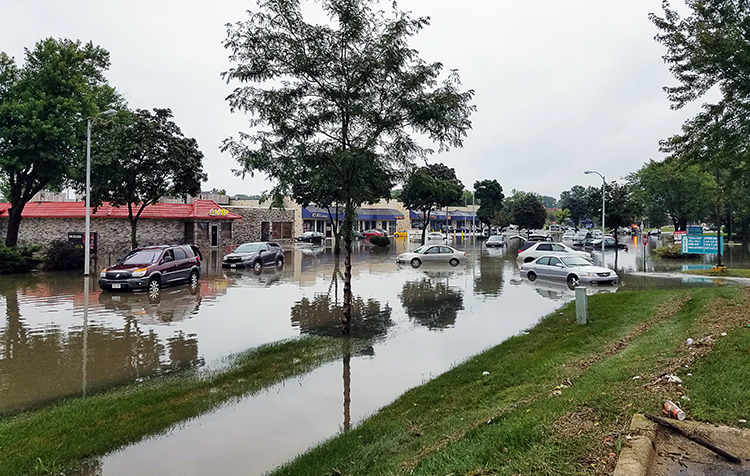Disasters may not be totally avoidable—particularly natural disasters—but we can reduce their impact through proper disaster preparedness.
Cities, state governments, utility companies and commercial businesses can improve their resilience to disasters with the right risk management and disaster preparedness strategies. Utility companies in particular need to think ahead because of the common weather events that often interrupt vital services such as electricity.
Disaster preparedness can be approached methodically and strategically. By taking a step-by-step approach, disaster preparedness can be more successful.
The Four Phases of Disaster Preparedness
One common model for disaster preparedness involves four phases. These are the phases that every organization and entity will typically go through in relation to disasters. The phases are mitigation, preparation or preparedness, response and recovery. (Some models also add a first preliminary step, which is prevention.) Here is a look at the four main phases of disaster preparedness:
Disaster Preparedness Phase 1: Mitigation
As mentioned above, some models for disaster preparedness include an initial separate step called “prevention,” but in our view, mitigation also includes prevention. The idea is to prevent emergencies if possible and proactively mitigate their impact.
Mitigation needs to happen not only before the disaster takes place, but long before the disaster is on its way. It is not “mitigation” to scramble to prepare once you know a hurricane is barreling down on your building. Rather, mitigation is about the strategies and plans that are put into place well before hurricane season.
Disaster Preparedness Phase 2: Preparation (Preparedness)
Phase 2 of disaster preparedness is all about taking action on the mitigation strategies to get the organization or entity prepared for the potential or coming emergency.
Certainly, there can be a fine line between mitigation and preparedness, but preparation may be seen as being more expedient to an actual threat. For example, if your utility company has a plan to proactively remove hazardous trees prior to hurricane season, that might be filed under ‚Äúmitigation.‚Äù If the utility company is actively removing tree branches that are at risk of falling on power lines because a hurricane is forecasted to hit the area, that’s better filed under preparedness.
Disaster Preparedness Phase 3: Response
Phase 3 of disaster preparedness falls after the major event has taken place. In effect, it’s more about how well-prepared you were, because the preparation period is now over! The response phase is all about how an organization deals with the immediate aftermath of a major disaster such as a fire, tornado, snowstorm or hurricane.
For utility companies, a major part of the response after a natural disaster will likely be tree clearing. Trees will need to be cleared from power lines and roads, which is where a tree service provider like Townsend Tree comes in.
Disaster Preparedness Phase 4: Recovery
After the disaster has hit and following the immediate aftermath, the recovery phase occurs. This is the period of time in which rebuilding happens after a disaster. The immediate risks and urgency of the response phase has passed, and things have calmed down, but there is still a lot of work to do to rebuild.
The recovery phase can be a long phase and run anywhere from six months to a year or even more. During the recovery phase, it is often a good idea to start working on phase 1 again, mitigation, and start planning ahead for the next disaster.
Utility Companies and Natural Disasters
More and more, it seems like a week doesn’t go by without another natural disaster occurring in the United States. We seem to go seamlessly from blizzards to fire season to hurricane season to floods to tornadoes these days.
Utility companies in particular are perpetually under the gun to keep services up and running despite the continuous bad weather.
One of the most common problems with a natural disaster, but one that can also be easily mitigated, is the issue of trees. Trees burn, ice up, collapse after a flood and blow down in tornadoes and hurricanes. Unfortunately, trees are also very common around power lines that are necessary for electrical services. But one of the easiest ways to mitigate damage from a disaster is simply through proper tree management. Trees that are well maintained and pruned around power lines will be less likely to cause problems during a windy thunderstorm or snowstorm.
Of course, no amount of tree pruning is going to stop a category five hurricane from blowing a tree completely down. Nor will many trees be able to survive an EF5 wedge tornado. But some of these events can also be mitigated through proactive assessment of trees to remove old, damaged and diseased trees that might be more likely to blow away during high wind events.
We can’t live without trees, nor would we want to, so making sure that the trees that grace our streets are healthy and secure is one of the best ways to reduce damage from a major environmental disaster.
Better Disaster Preparedness with a Quality Tree Service Provider
Townsend Tree is a tree service provider with a stellar track record in disaster preparedness and disaster recovery. With innovative technology and knowledgeable personnel, we offer the best in vegetation management, power line clearance and storm damage relief. Our hazard tree program involves a proactive inventory of potentially dangerous trees that are at risk of downing power lines and damaging people and property.
Townsend Tree’s headquarters are in Muncie, Indiana, near Indianapolis, and our workforce spans more than 30 states. With over 75 years of service, Townsend Tree has become a leading tree service provider known for quality and customer care.
Townsend Tree Service is a leading, multi-state provider of expert tree trimming, line clearing, and vegetation management services. We have extensive expertise preparing for major disasters like tornadoes, hurricanes, winter storms and more. Learn more about our integrated vegetation management services here.
